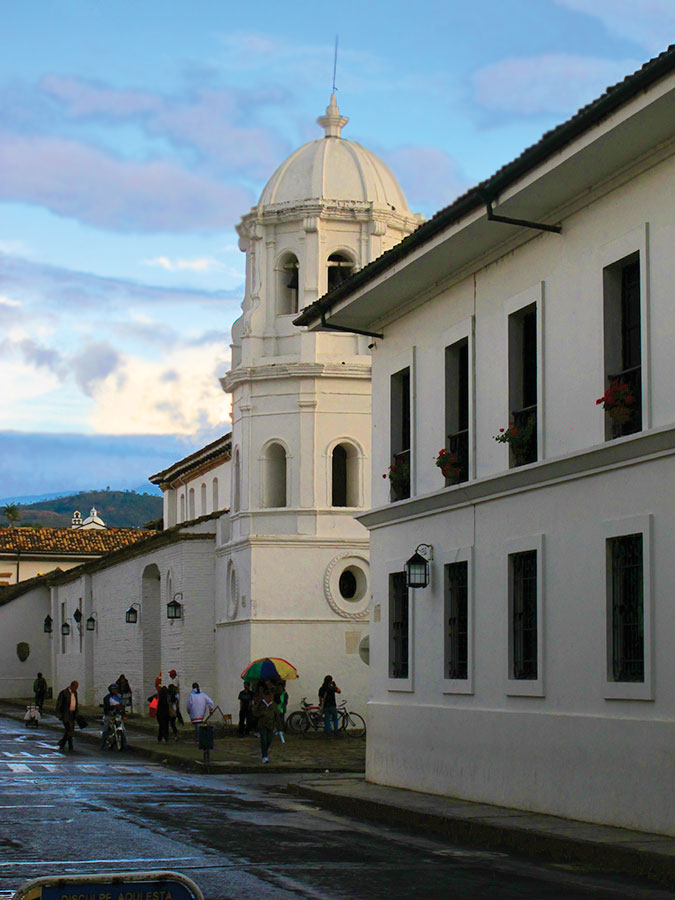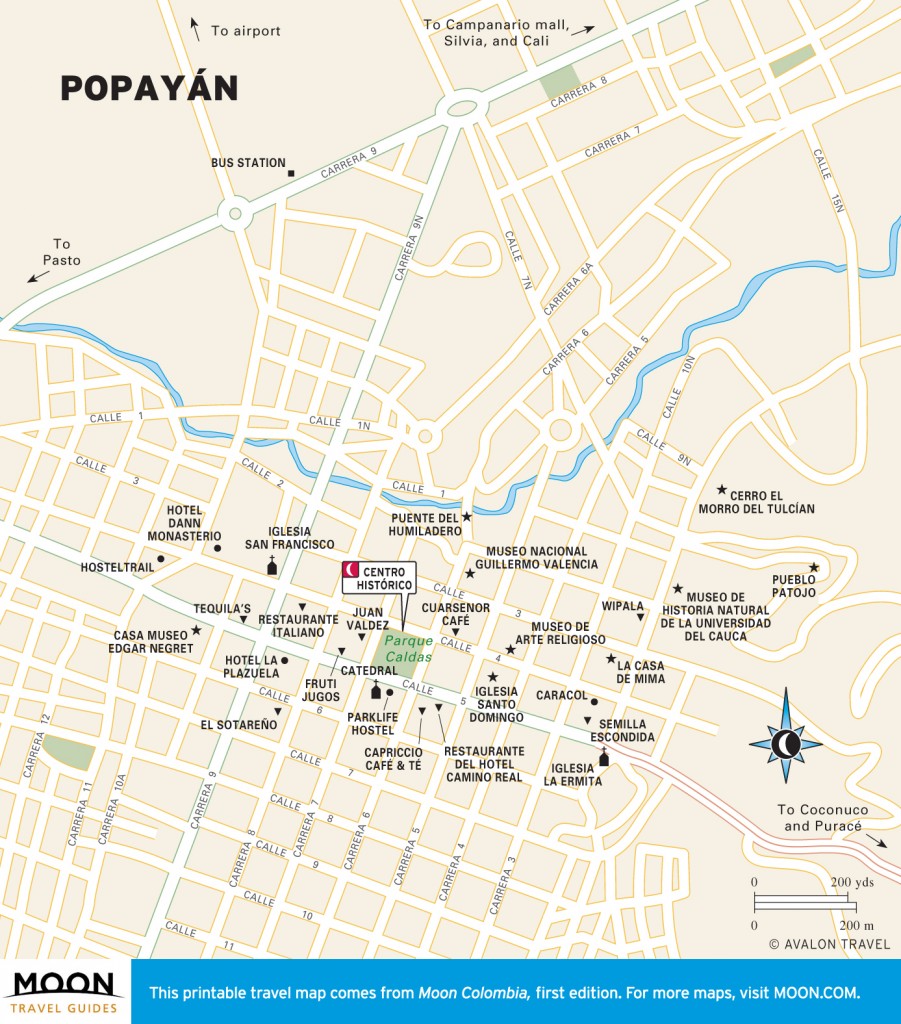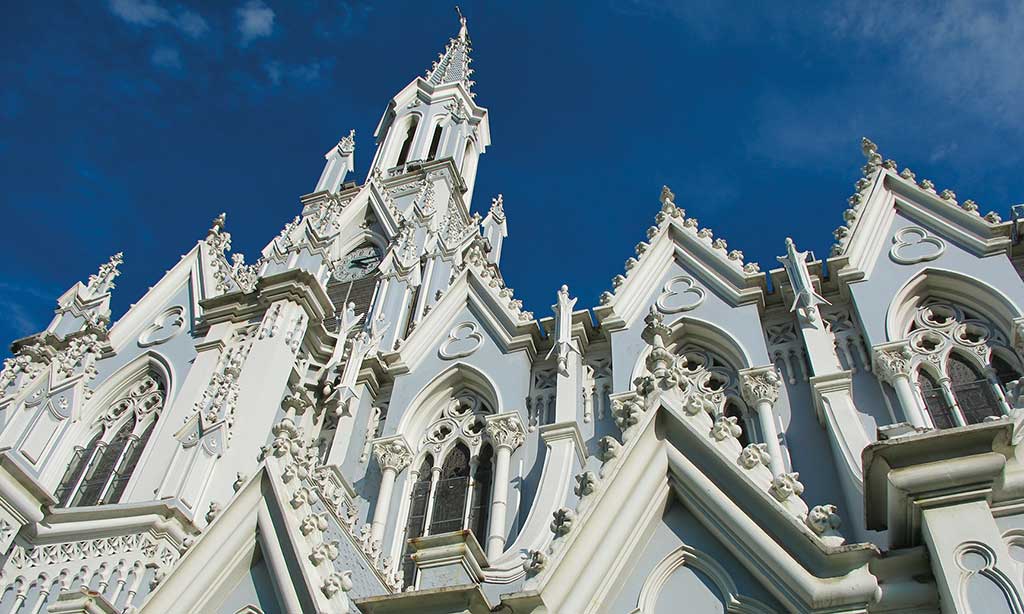The temperate capital of Colombia’s Cauca department, Popayán is the White City along the banks of the Río Cauca between the Cordilleras Central and Occidental (Central and Western Mountain Ranges). It is a dignified city, proud of its place in history as the home of presidents, poets, and priests. It retains its colonial charm despite earthquakes and modernization. Religion retains its importance in the lives of its people; during the annual Holy Week celebrations the entire city takes part in solemn processions through the streets. Idyllic churches and museums are the main places of interest in Popayán, but lingering in the Parque Caldas on a sunny afternoon or strolling the lonely streets on a Sunday evening may be what you remember most.
You can ask at the church to see the mummies that were found here following the earthquake.Popayán is also a great base from which to explore sights nearby. Just outside of town is the Guambarino indigenous town of Silvia, famous for its colorful Tuesday market. In Coconuco, you can take a dip in the hot springs, and Parque Nacional Puracé is a nearby national park where you can hike to the rim of a volcano, the Volcán Puracé.
The White City of Popayán. Photo © Andrew Dier.
Farther afield in Cauca is the archaeological site of Tierradentro, and beyond that, in the Huila department, is San Agustín. These two sights can be combined in a circuit trip in three or four days from Popayán, although many tourists choose one or the other.
The Parque Caldas (Clls. 4-5 and Cras. 6-7) in the center of Popayán is a lovely pedestrian square and the city’s main point of reference. It’s a fantastic place to have a coffee (there’s a Juan Valdez Café on the square) or just hang out, day or night. Your discovery of Popayán begins here.

Popayán
The Casa Museo Edgar Negret and Museo Iberoamericano de Arte Moderno de Popayán (MIAMP, Cl. 5 No. 10-23, tel. 2/824-4546, 8am-noon and 2pm-6pm Wed.-Mon., COP$2,500) is in the home of Edgar Negret, a Colombian artist best known for massive abstract iron sculptures that adorn public spaces in cities throughout Colombia and in museums throughout the world. Negret donated this 18th-century house to the city in an effort to promote its rebirth following the devastating 1983 quake.
An oft-talked-about piece at the museum is a model of Negret’s proposal for a monument to Simón Bolívar in Bogotá that ended up being too abstract for the Bogotanos.
The museum was the scene of excitement when, in 2011, an etching by Pablo Picasso was stolen from Negret’s private collection. Worth over US$65,000, it was recovered when the thief tried to sell it a few months later. Negret passed away in Bogotá in 2012 on his 92nd birthday.
The Museo de Historia Natural de la Universidad del Cauca (Cra. 2 No. 1A-25, tel. 2/820-9861, 9am-noon and 2pm-5pm daily, COP$3,000) was founded in 1936. This expansive museum on the edge of the historic center is considered the best natural history museum in Colombia and highlights the astounding variety of species, both plant and animal, that are found in Colombia. A guide will show you through.
Museo Nacional Guillermo Valencia (Cra. 6 No. 2-69, tel. 2/820-6160, 10am-noon and 2pm-5pm Tues.-Sun., COP$2,000) is an 18th-century house near the Puente del Humilladero that was the home of Popayán poet Guillermo Valencia. His son, Guillermo Leon Valencia, was president in the 1960s. The museum may not be of great interest to foreign visitors, but the house is undeniably a beauty. The Puente Humilladero and Puente de la Custodia are historic bridges next to the Museo Casa Valencia. The Puente de la Custodia dates to the 18th century.
The Museo de Arte Religioso (Cl. 4 No. 4-56, tel. 2/824-2759, 9am-12:30pm and 2pm-6pm Mon.-Fri, 9am-2pm Sat., COP$5,000), run by the Arquidiocesis de Popayán, has 10 rooms of religious art from the colonial era in an 18th-century neoclassical house covering Quiteño, Popayán, and Spanish styles. You’ll probably be guided through by a police cadet.

Iglesia La Ermita in Cali. Photo © Andrew Dier.
There are several colonial churches dating from the 17th to 18th centuries to visit in Popayán. Most of them have been restored following earthquakes over the years. The Iglesia San Francisco (Cl. 4 and Cra. 9, tel. 2/824-0160) is one of the most beautiful churches and dates to the late 18th century. You can ask at the church to see the mummies that were found here following the earthquake. The Iglesia La Ermita (Cl. 5 and Cra. 2, tel. 2/820-9725) is older, dating to the 16th century. It has some fine woodcarvings and paintings. The Iglesia Santo Domingo (Cl. 4 and Cra. 5, tel. 2/824-0536) is where the Good Friday procession begins every year. The neoclassical cathedral (Cl. 5 and Cra. 6, tel. 2/824-1710) on the Parque Caldas was completed in the early 20th century. The cathedral’s official name is Catedral Basílica de Nuestra Señora de la Asunción de Popayán, but it is always referred to as “la catedral.”
Excerpted from the First Edition of Moon Colombia.